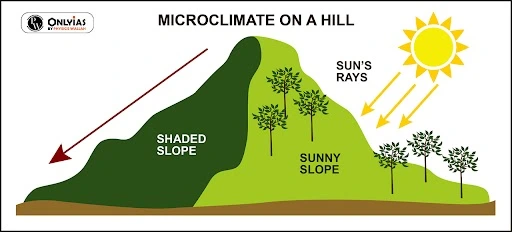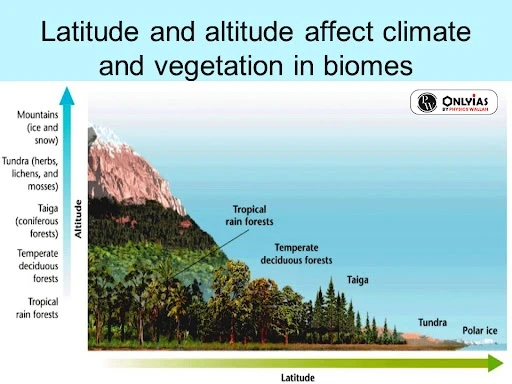| Terrestrial Ecosystems: Types, Environmental Factors & Ecological Significance |
Terrestrial Ecosystems: Land-Based Ecological Communities
A terrestrial ecosystem is a distinct ecological community of organisms, both living and nonliving, that inhabit and interact within a land-based environment. These ecosystems encompass a vast range of terrestrial habitats, from lush forests and expansive grasslands to arid deserts and frozen tundras.
Terrestrial Ecosystems: Types on Earth
These ecosystems are predominantly found on land
Following diagram depicts the different types of terrestrial ecosystems.

Environmental Factors That Shape Terrestrial Ecosystems Around the Globe
- They are found in a particular place are dependent on factors like:
- Topography
- Altitudinal and latitudinal variations
- Quality of soil
- Amount of light
- Amount of precipitation
- Temperature range etc.
- Topography: It is the physical features of the land’s surface which has a significant impact on terrestrial ecosystems.
- Altitude: Higher altitudes are associated with cooler temperatures. They lead to the formation of alpine ecosystems.
- Slope: The steepness of slopes can affect water drainage, soil erosion, and the types of vegetation that can grow.
- Aspect (Orientation): The direction a slope influences its exposure to sunlight and temperature. This can create microclimates and influence the types of plants and animals present.
- Valleys: Valleys generally have more fertile soil, thus supporting lush vegetation compared to the surrounding hills or mountains.
- Natural Barriers: Mountains, hills, and other topographic barriers can isolate ecosystems, leading to the development of unique flora and fauna in different regions.

- Altitudinal and Latitudinal Variations: They have significant effects on terrestrial ecosystems.
- Altitude: Increase in altitude leads to generally decrease in temperatures. This temperature gradient influences the types of ecosystems found at different elevations.
- Latitude: Latitudinal variations primarily influence temperature and climate.
- Near the equator, tropical ecosystems experience consistently warm temperatures and high rainfall, while closer to the poles, temperate and polar ecosystems have colder temperatures.
- Quality of Soil: Soil has a profound impact on ecosystem structure, function, and health.
- Soil serves as a reservoir for essential nutrients.
- Soil provides physical support and anchorage for plants.
- Amount of precipitation: Precipitation has a significant impact on terrestrial ecosystems.
- Precipitation influences various aspects of ecosystems, including plant growth, animal behavior, and overall ecosystem structure.
- Temperature range: Temperature is a critical abiotic factor that has a profound effect on the ecosystem’s structure, function, and the organisms that inhabit it.
- Species locality: Different species have varying temperature tolerances, and the temperature range dictates which species can thrive in a particular area.
- For example: Cold-adapted species are found in polar regions, while heat-tolerant species inhabit tropical ecosystems.
Conclusion
- They are dynamic and diverse environments that cover the Earth’s surfaces.
They play a vital role in supporting life on our planet and offer numerous ecosystem services, including food production, carbon sequestration, water purification, and recreational opportunities.

 GS Foundation
GS Foundation Optional Course
Optional Course Combo Courses
Combo Courses Degree Program
Degree Program













